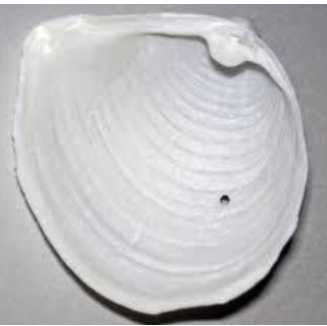
Calcareous shell is seen in:
a. Oyster
b. Snail
c. Slug
d. All of the above
Answer
497.4k+ views
Hint: We all know that the small and tiny organisms present on the earth have no special organs to protect themselves from predators so they are having no protection. The calcareous shell can be defined to be the hard and external skeleton which affords shield to these tiny organisms.
Complete answer:
> An exoskeleton made by calcareous and helps in enclosing, supporting, and protecting the soft organs present in an animal in the location of phylum Mollusca is typically known as the mollusk (also known as mollusk) shell.
> This also consists of small and tiny organisms such as shells, clams, snails, tusks, and several other modules. However, on the other hand, not all shelled mollusks live in only the sea; many shelled mollusks live on the terrestrial land and in freshwater bodies.
> The characteristics of being a soft, unsegmented body along with a hard shell which is made up of calcareous can help in categorizing the animals into the class of Phylum mollusca.
> The small and mild organisms like an oyster, snail. Slug are examples of the creatures present in the class of Phylum mollusca. The Calcareous shell is the so-called hard exoskeleton which helps these animals to survive by offering protection to these organisms.
Hence, The correct answer is option (D).

Figure-1: it shows the shell of Mollusca which is made up of Calcareous.
Note:
- Malacology is the scientific and systematic study of invertebrate zoology, which deals with the study of the Mollusca as living organisms, who are the second-largest phylum of invertebrate animals in terms of designated classes after the phylum of arthropods.
- Malacology, which is the study of the mollusks, has a subdivision dedicated to the education of shells, and this study is known as conchology.
Complete answer:
> An exoskeleton made by calcareous and helps in enclosing, supporting, and protecting the soft organs present in an animal in the location of phylum Mollusca is typically known as the mollusk (also known as mollusk) shell.
> This also consists of small and tiny organisms such as shells, clams, snails, tusks, and several other modules. However, on the other hand, not all shelled mollusks live in only the sea; many shelled mollusks live on the terrestrial land and in freshwater bodies.
> The characteristics of being a soft, unsegmented body along with a hard shell which is made up of calcareous can help in categorizing the animals into the class of Phylum mollusca.
> The small and mild organisms like an oyster, snail. Slug are examples of the creatures present in the class of Phylum mollusca. The Calcareous shell is the so-called hard exoskeleton which helps these animals to survive by offering protection to these organisms.
Hence, The correct answer is option (D).

Figure-1: it shows the shell of Mollusca which is made up of Calcareous.
Note:
- Malacology is the scientific and systematic study of invertebrate zoology, which deals with the study of the Mollusca as living organisms, who are the second-largest phylum of invertebrate animals in terms of designated classes after the phylum of arthropods.
- Malacology, which is the study of the mollusks, has a subdivision dedicated to the education of shells, and this study is known as conchology.
Recently Updated Pages
Master Class 12 Social Science: Engaging Questions & Answers for Success

Class 12 Question and Answer - Your Ultimate Solutions Guide

Class 10 Question and Answer - Your Ultimate Solutions Guide

Master Class 10 Science: Engaging Questions & Answers for Success

Master Class 10 Maths: Engaging Questions & Answers for Success

Master Class 9 General Knowledge: Engaging Questions & Answers for Success

Trending doubts
Is Cellular respiration an Oxidation or Reduction class 11 chemistry CBSE

In electron dot structure the valence shell electrons class 11 chemistry CBSE

What is the Pitti Island famous for ABird Sanctuary class 11 social science CBSE

State the laws of reflection of light

One Metric ton is equal to kg A 10000 B 1000 C 100 class 11 physics CBSE

Difference Between Prokaryotic Cells and Eukaryotic Cells




